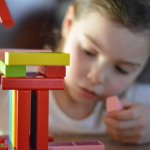Social Institutions In Our Locality Civic Education Nursery 2 Second Term
Civic Education
Nursery 2 – First Term Lesson Notes
Week 2: Social Institutions
Topic: Social Institutions
Sub-Topic: Understanding Social Institutions and Their Functions
Behavioral Objectives
By the end of the lesson, pupils should be able to:
- Identify social institutions in their community.
- Explain the functions of some social institutions.
- Mention examples of social institutions in their area.
Keywords
- Social institutions
- Family
- School
- Hospital
- Church
- Mosque
- Palace
- Stadium
- Court
Set Induction
The teacher asks the pupils:
- “Who takes care of you at home?”
- “Where do you go when you feel sick?”
- “Where do you learn how to read and write?”
Entry Behavior
The pupils are familiar with their family, school, and places they visit, like a hospital or church.
Learning Resources and Materials
- Pictures of social institutions (family, school, hospital, church, mosque, palace, stadium, law court).
- Flashcards with the names of social institutions.
- Videos or songs about community places.
Building Background/Connection to Prior Knowledge
The teacher explains that social institutions are important places that help people in different ways, such as teaching, caring, or providing justice.
Embedded Core Skills
- Communication skills
- Critical thinking
- Social awareness
Content
What Are Social Institutions?
Social institutions are public places that provide special services to people. They help us in many ways, like teaching, treating sickness, or solving problems.
Examples of Social Institutions
- Family
- This is the smallest social unit in society.
- A family includes a father, mother, and children.
- Some families also live with relatives like uncles, aunts, and cousins.
- Key Message: Charity begins at home.
- Schools
- Schools are places where children learn ideas, knowledge, and values.
- They help pupils become responsible members of society.
- Key Message: Schools are places to read, write, and learn.
- Hospitals and Clinics
- These are places where sick people go for treatment.
- Doctors and nurses take care of patients.
- Key Message: Hospitals keep us healthy.
- Churches and Mosques
- These are places of worship.
- Christians worship in churches, and Muslims worship in mosques.
- Key Message: Worship brings us closer to God.
- Palace
- A palace is where the king lives.
- The king is the royal father of the community.
- Key Message: A palace is the king’s home.
- Stadium
- A stadium is a place for sports and games.
- People play football and other sports in the stadium.
- Key Message: A stadium is for sports.
- Law Court
- A law court is where legal cases are judged and settled.
- It helps ensure justice in the community.
- Key Message: Courts provide justice.
Teacher’s Activities
- Show pictures of different social institutions.
- Ask pupils to identify and describe each place.
- Explain the importance of each social institution using simple examples.
Learners’ Activities
- Identify social institutions in their community.
- Match pictures of social institutions with their names.
- Mention what each institution does.
Assessment
- What is the smallest social unit in society?
- Name two places where people go when they are sick.
- Where do children learn how to read and write?
- Who lives in the palace?
- What do we do in a stadium?
Evaluation Questions
- Social institutions help us in different ways. (True/False)
- Who is the head of the family?
- A place where we learn and write is called _______.
(a) School (b) Hospital - Christians worship in a _______.
(a) Mosque (b) Church - Doctors work in _______.
(a) Schools (b) Hospitals - The king lives in a _______.
(a) Palace (b) Court - The place where we play football is a _______.
(a) Stadium (b) School - The smallest social unit is _______.
(a) Family (b) Church - A court is for _______.
(a) Justice (b) Worship - The Nigerian flag has three colors. (True/False)
Conclusion
The teacher reviews the importance of social institutions by asking pupils to name some examples and describe their functions. Pupils are encouraged to visit these institutions with their parents.
Home Task: Draw a picture of any social institution you like.
Evaluation
Mention any three social institutions
- ____________________________________
- ____________________________________
- ____________________________________
- ____________________________________
